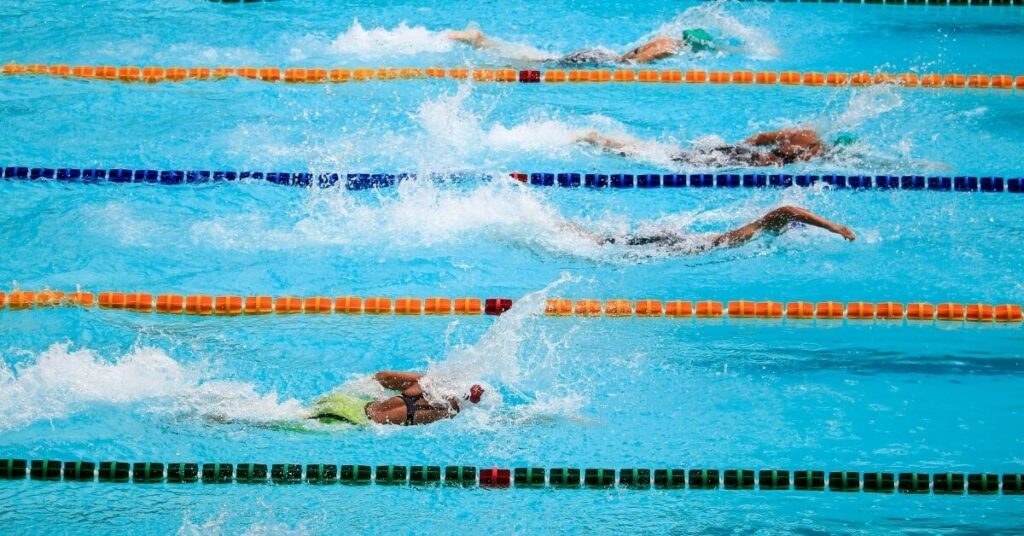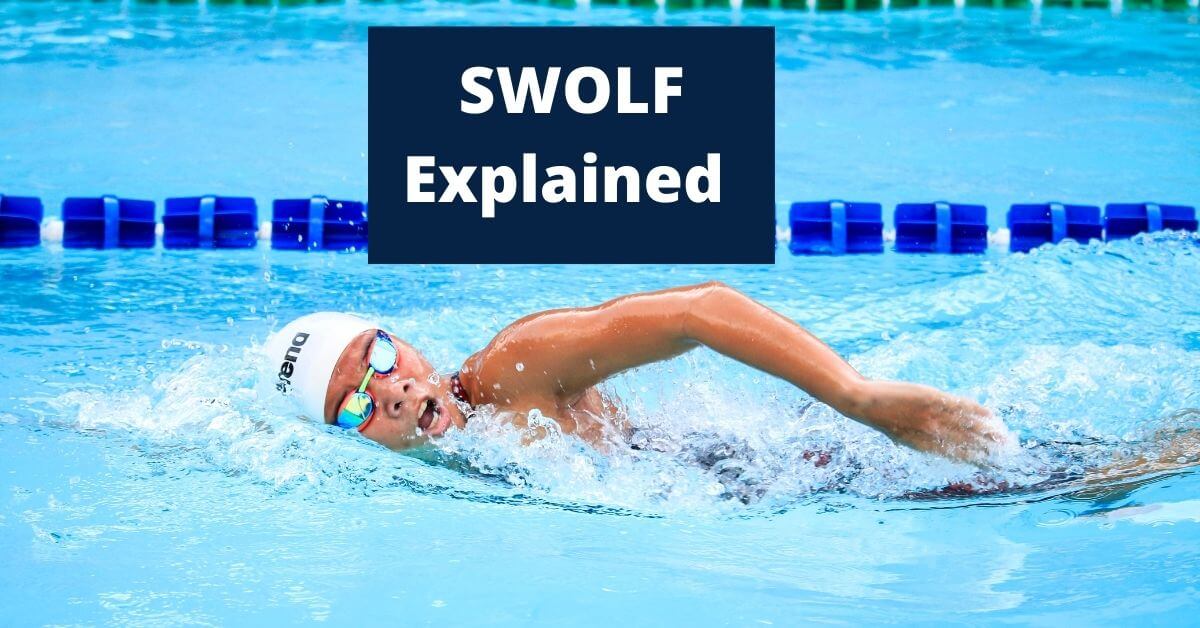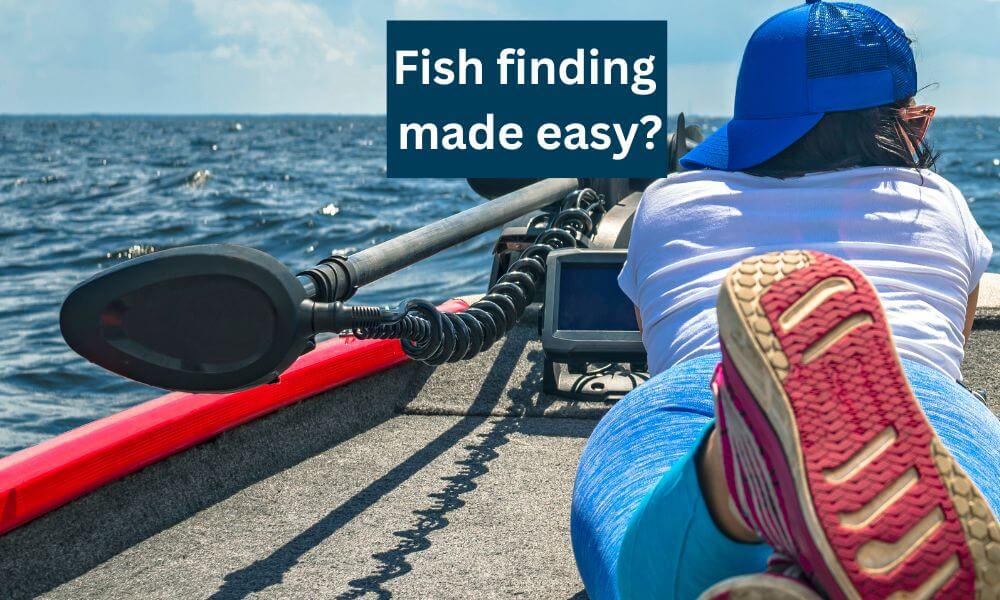Have you ever heard of other swimmers talking about SWOLF? If so, did you ask yourself, what on earth are they talking about? Well, don’t worry, we’ve put together this brief guide on everything to do with SWOLF.
We’ll take a look at what is SWOLF, how it can be measured and if it can help you become a better and more efficient swimmer.
So, without further ado, let’s dive right in (see what I did there!)….:)
What is SWOLF?
If you haven’t come across this term before then you might be thinking that it’s a bit of an odd word. Well, guess what? In our view, you’d be absolutely right!
SWOLF is a combination of two separate words squashed together – SWIM and GOLF. Some genius somewhere decided to put them both together and came up with the term SWOLF!
It does seem a little makey uppy, however, there is some logic behind it. And let’s not forget that the term has been firmly adopted by those in the swimming community.
If you’ve ever played the game of golf, then you may know that the lower the number of shots you take in a round, then the better you’ve played. In other words, a lower score is something you should strive for as it means you’ve played well. The thinking behind your SWOLF score is similar i.e. the lower your score, the better your performance.
SWOLF is a method of calculating your swimming efficiency. The lower your score, then in theory the more efficient of a swimmer you are.
How To Calculate Your SWOLF
In order to bring a little bit of mathematics to your training you can calculate your SWOLF score as follows:
Take the time that you take to complete a length of the pool, and add to that figure the number of strokes you took to complete it. In other words:
Time to Swim 1 Length + Number of Strokes = Your SWOLF score
As an example, if you swim a length in 40 seconds and use 18 strokes, then your SWOLF score is calculated at 58.
Remember, the lower your SWOLF score, the better your performance.
Thankfully, there’s some pretty good news as you no longer need to manually calculate your SWOLF score. There are various sport watches available swimming watch, such as the Garmin Swim 2 will do the calculation for you.
What is a Good Swolf Score?
In all honesty, the answer is going to depend upon your fitness levels, your age group and your swimming proficiency. If, however, you are looking for a specific figure to aim for then I would seek to get your Swolf score under 40.
Most swimmers consider any score under 40 to be an excellent result.
Is SWOLF Useful?
In short, yes it is an useful metric if you’re a swimmer that wants to improve your times and efficiency. Your SWOLF score can help you analyse your swimming performances by capturing your stroke count and swim times. Efficient swimming in theory could mean just lowering your stroke count on a length, however, this does not mean that you will necessarily keep up your speeds. Rather, this is a tool that you can use in order to find that sweet spot in the water, between speed and efficiency.

Indoor or Outdoor?
A Swolf swimming metric is based upon a 25 meter length pool.In other words, no matter where you are swimming it measures the swim distance in intervals of 25 meters. This is pretty straightforward if you are swimming in an indoor pool, however, if you are in the sea it can be much more difficult to calculate.
Our recommendation, if you want to calculate your swim efficiency in the sea is to use a GPS enabled swimming watch. The Garmin Swim 2 is one of the smart watches that can use GPS in order to measure both your pace and your distance. The accuracy of the readings will depend upon the quality of the GPS on the day.
In order to improve and provide the best possible GPS signal when out in the open water try swimming with your GPS watch tucked inside your swim cap. Sounds a bit crazy, I know, but apparently once you start your swim you forget that it’s there!
How to Lower your SWOLF Score
There are a number of different ways that you might be able to reduce your Swolf score. The most obvious method should be to ensure that you continue practicing on a regular basis. Sensible regular training in any sport should provide improvements in athletic performance and will undoubtedly make your both fitter and stronger.
It can also be a good idea to ask a swimming coach to asses your swimming technique to ensure that you are getting optimal efficiency in the water. Beyond this you can look to lower your stroke rate per length , whilst ensuring that you keep the same swim times. In other words, try to get some faster times using a lower stroke count. This should help you lower your swimming Swolf scores.
Swolf Drawbacks
Using any system in order to obtain an insight into swimming efficiency is likely to have its drawbacks. As a measure of swimming efficiency the Swolf measurement is pretty good. What it doesn’t do, however, is capture the level of effort involved in your workout analysis. Two separate swimmers may have very similars wolf scores, but the levels of effort required by both to obtain them may be very different.
The only way that it may be possible to capture the levels of effort involved would be to somehow use heart rate levels within the calculation. A swimmer with a low wolf score, but a very high heart rate measurement during the swim may not be the most efficient of swimmers.
Conclusion
The basic idea of a Swolf score is to provide your measurement of swimming efficiency. It helps you track your stroke rate and your efficiency over time. If your goal is to became a better and more excellent swimmer then the Swolf is an useful tool in your armoury.
As we’ve noted, it’s not a perfect system of measurement in the open water, there are some steps that you can take to mitigate any drop in GPS accuracy. Likewise, it’s important to be aware that the measure of efficiency does not always correlate with the levels of effort and time required to get there.
There’s no question, however, that this score can be extremely useful to swimmers in measuring their progress in the water. It can provide an excellent gauge as to whether you are progressing as a swimmer.
Swolf will help you measure your swimming performances in such a way that can help you understand how much energy you will have left in the tank. This is an extremely useful metric for an athlete looking to compete in a triathlon or an ironman competition.
In the meantime…….happy swimming!



